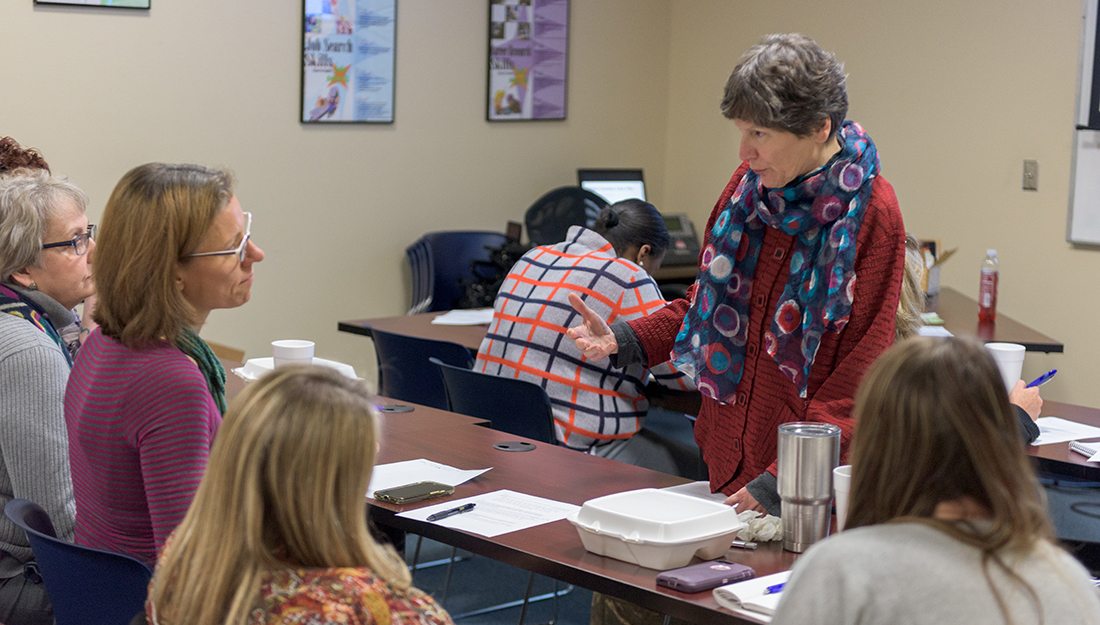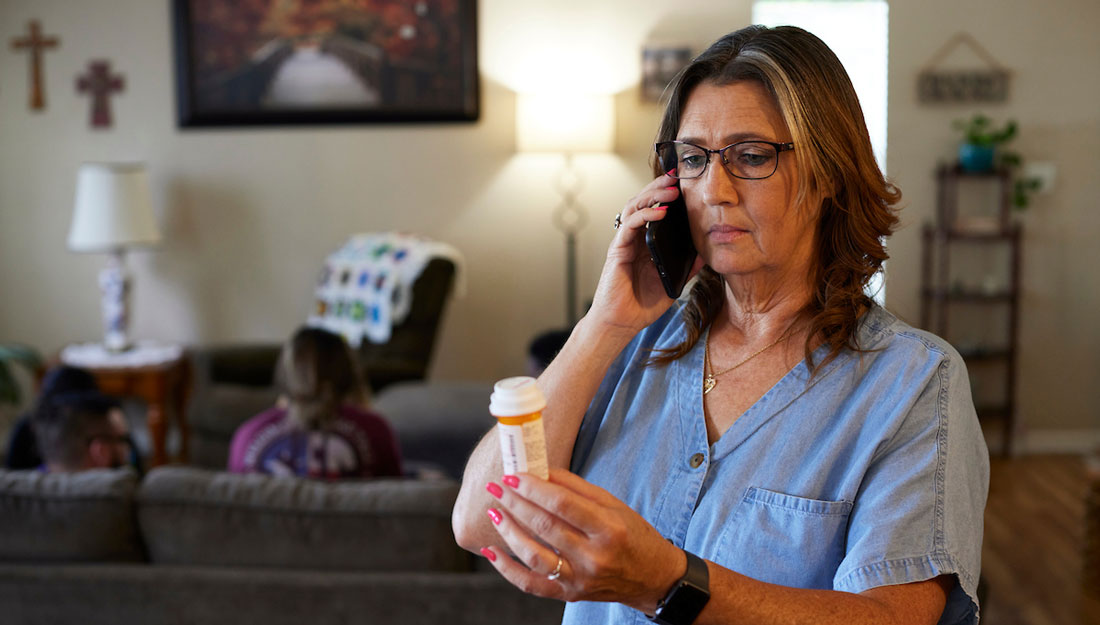- Marcia Ory, PhD, MPH
- Point of View, Show on VR homepage
Breaking silos between academia and community
Moving toward more collaborative health care

Healthcare Silos. Marcia Ory speaks to women about naloxone use during an opioid overdose.
We started the Strategic Partnerships and Initiatives at the Texas A&M University Health Science Center to serve as a central focus for community-facing projects. We brought many of our Texas A&M programs centered on improving population health across Texas into one place. Currently this includes community-based programs such as the Coastal Bend Health Education Center, the South Texas Center and TexVet, as well as programmatic initiatives such as Healthy South Texas and the Opioid Task Force.
What these programs have in common is a mission to provide needed research, education and practice to compelling public health problems in a coordinated manner that reaches all Texans, but especially those in underserved and rural areas. Our redefinition of patient care centers on removing the barrier between the patient and health care by breaking down various silos, and extending health care beyond the clinic. In short, this means the creation of collaborative relationships among and between campus, communities and clinical entities not to just treat illness, but to create a culture of health.
Silo one: Difference between academic research and community needs
As long as I can remember, our communities have experienced a disconnect between health care research and health care practices. In the past, researchers from across health care tended to work in their own silos—they designed studies and gathered results, but elicited minimal input from the community members to develop practical applications of their results. This process and lack of collaboration tended to result in great ideas and evidence-based advice that never made it to the people who could use them, or that, when tried, often failed due to problems of implementation in real-world settings.
When we use the term “community-based participatory research” and “patient-centered outcome research,” we are speaking about research that begins with the patient or the community in mind. In this type of work, we tend to seek greater understandings of community health needs before designing studies, which ultimately helps to translate discoveries into more practical applications. This adjustment is just beginning to break down the barrier between academia and the community.
One of our programs that does this particularly well is Healthy South Texas, a community-facing program that combines resources and expertise from the Texas A&M Health Science Center with Texas A&M AgriLife Extension Service to educate and provide resources for families to stay healthy. This program includes the Coastal Bend Health Education Center and the South Texas Center in McAllen, Texas.
Through these programs, we learned to work very closely with communities to not only assess their needs, but also help them prioritize their unique needs as communities. We have people on the ground everyday educating and working with the community members to break down the barriers that divide what the community wants and what the community needs to do to accomplish those wants.
Silo two: Lack of collaboration between health professions
We are also breaking down the silos across the Texas A&M Health Science Center by utilizing all health professions. Every health profession has a role in the care of a patient, so everyone has a role in finding a solution to a health problem.
For example, the Opioid Task Force enlists help from every discipline—medicine, nursing, public health, dentistry and pharmacy. We all come together to identify the magnitude of the problem and understand what the options are for the community. The role of public health is very important in this approach, helping communities have the support they need helps keep people healthier for longer–reducing costs and improving health outcomes.
The Opioid Task Force does not just look at individuals who are impacted by opioid use disorder, but it evaluates the systems that influenced the problem. To solve it, we need to understand how how opioid use disorder developed, then identify modifiable influences—too much prescription pain medication, too much stress, not enough mental health services and lack of access to affordable treatments, among others.
We are not evaluating the problem on an individual level, but on a systematic and societal level to understand the role everyone plays in the problem. Again, we are breaking down those silos—it is not just the responsibility of one health profession to solve the problem.
Silo three: Narrow definition of health
Health constitutes more than just physical health. In line with a recent Journal of the American Medical Association (JAMA) article on flourishing, we believe the definition of health includes mental health and spiritual health as well as community health. The strategic partnerships and initiatives unit understands that the majority of health occurs outside the health care provider’s limited appointment visit. It occurs on a day-to-day basis within the community or at home. We also understand there are many determinants like behavior, environment or social context that potentially influence health.
One of the initiatives at the Health Science Center, TexVet, exemplifies these understandings. TexVet is a specialized information and referral program that connects Texas military members, veterans and their family members and those who serve them with trusted information and services that are most important to them. These include educational benefits, legal assistances, employment resources, mental health resources and peer groups.
The program breaks down silos every day. It genuinely understands veteran needs and makes efforts to search for services, health-specific or not. It strives to better more than just physical health…it strives to improve the overall health of a veteran. TexVet strives to reduce the amount of barriers veterans encounter prior to care and address unique veteran-specific needs across the state.
Conclusion
Now that we are entering into the “century of the patient,” health care practitioners and researchers are experiencing a subtle shift in the quality of health care to make the focus centered on the person, their family and their community. The shift to patient-centered care does not happen in a vacuum. It is a result of a greater cultural shift of empowerment in the United States. Health care practitioners, much like the patients they serve, are more than the sum of their parts. At the Health Science Center, we understand this concept and continue to break down the silos that separate health experts from communities. This is something I am excited about in my role leading our strategic partnerships and initiatives.
Media contact: media@tamu.edu


